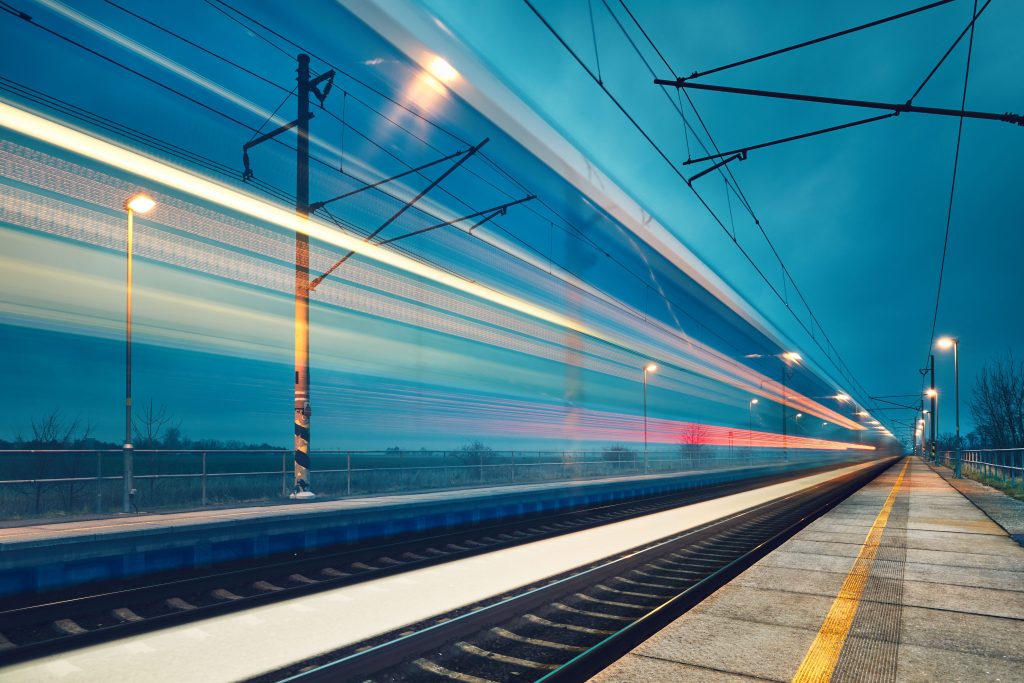Connectivity in rail travel: the next generation
by Mark Barrett
It is common knowledge that passenger Wi-Fi on Britain’s trains is all too often painfully slow. However, Oxford Professor Dr Daniel Susskind, has recently shed some light on why old infrastructure and poor connectivity are highly problematic from an economic growth perspective. Commenting on the provision of free passenger Wi-Fi on trains, he goes as far as to say that,
“At a time when the British economy is on its knees, these are the sorts of low-hanging investments that we should seize. But we do not.”

The economics of rail passenger Wi-Fi
According to Dr Susskind, whilst scrapping on-board Wi-Fi might save the Train Operating Companies (TOCS) around £5m a year, instead the focus should be on boosting the performance of Wi-Fi on trains to make rail travel a more attractive and productive proposition to business travellers and commuters.
Using the same business case assumptions used by the UK Government in estimating the return on investment for the HS2 project, this assumed a nominal value of a commuter’s time is given as £6.04 per hour and that of a business traveller as £31.96 per hour. Dr Susskind further calculated that British passengers make around 1.5 billion rail journeys a year with two-thirds of journeys classified as commuter and a quarter for business travel. Using these numbers, Dr Susskind argues that the total value of time spent on board trains in the UK is around £18 billion a year.
By making that travel time more productive through enhanced connectivity, the UK economy could receive a much-needed boost. In the HS2 business case, the maximum return for every £1 invested in HS2 was £2.50. According to Dr Susskind, the return on investment for the British economy of fixing the Wi-Fi on British trains could be as much as £50 for every £1 invested. Therefore, fixing passenger Wi-Fi would represent 20 times better value than the best-case ever presented for the original investment of £50 billion in constructing HS2 (from London to Manchester).
In addition, Dr Susskind further calculates that the value of the time lost on trains due to poor Wi-Fi connectivity equates to £376m of value a year.
But how can the UK and its rail operators effectively and cost-efficiently solve the problem of poor connectivity on trains?
Current Wi-Fi technology not fit-for-purpose
The current method for providing wireless connectivity to trains in the UK is based on combining data from multiple mobile operators – 4G and (where available) 5G wireless bearers. These are aggregated into a single data stream and delivered to passengers via on-train Wi-Fi access points. Typical connectivity rates per train are in the region of 50 Mbps or less than 50 kbps per passenger if all 1000 passengers on a peak hour train were (attempting) to connect. Moreover, this mobile coverage was not designed for optimum performance with the UK’s rail network where coverage is compromised due to tunnels, steep cuttings and sparsely populated rural areas. Network Rail and Ofcom have measured the nationwide mobile coverage which can be found here[1]. Secondly, connectivity demands are increasing rapidly, and aggregated mobile network signals are not able to cope with these growing bandwidth requirements.
Ofcom has also assessed that the demand post-2025 on a busy mainline train will exceed 1 Gbps for a typical train, which would further increase to 2-3 Gbps for a crowded commuter train[2]. Ofcom further concluded that only mmWave spectrum (defined as that above 30 GHz) has sufficient bandwidth to support this level of demand.
Why mmWave technology delivers superior connectivity for trains
The shortcomings of current solutions have led to the exploration of higher mmWave frequencies where more bandwidth is available. Companies like Blu Wireless have overcome significant technical challenges to deliver highly integrated technology, ready for deployment in the rail industry.
The Blu Wireless mmWave solution utilises the 57-71 GHz license exempt spectrum to deliver true gigabit connectivity on board trains, at data rates of 20x compared to current Wi-Fi and 5G solutions.
A breakthrough solution
The Blu Wireless LightningBlu mmWave solution is being deployed in the UK on South Western Railway and in the USA on the CALTRAIN ‘Silicon Valley’ commuter line. Further deployments on other rail networks are also planned from 2025.
Passengers can access the services they do at home and in the office while travelling at high speeds. The use of dedicated trackside access points ensures that there are no breaks in the connection even when the train is travelling through a tunnel or deep cutting, providing a consistent Wi-Fi experience for customers.
As Ofcom recommended in their October 2018 report to DCMS, by providing connection speeds of between 1-3 Gbps to trains of between 800-1000 passengers, a whole host of yet-to-be-realised applications will be supported. This system therefore supports true gigabit grade connectivity per train and is thereby delivering the requirements as set out by Ofcom’s advice to UK Government for passenger connectivity.
Returning to Dr Susskind’s call to modernise British railway connectivity and the enormous economic benefits high-speed, reliable train connectivity will generate for the country, I can only add that the technology capable of delivering this is readily available, proven, and cost-effective to deploy today. Let’s hope the decision-makers listen to these arguments.
References

